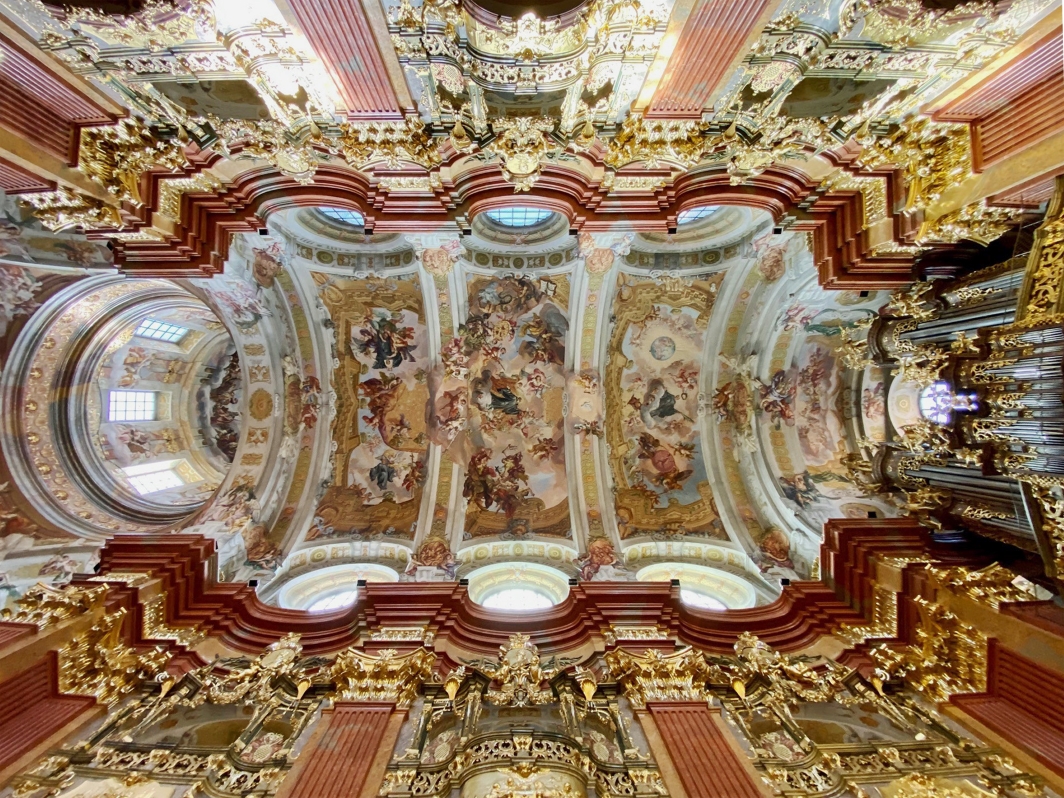Abbey church
The high point of the baroque monastery is the church. Following the wishes of the abbot and monastic community, this is intended to make the religious purpose of the entire construction and its orientation towards God clearly visible. The leitmotif “ABSIT GLORIARI NISI INCRUCE” (Glory is to be found only in the cross) is found in the inscription over the Benedict Hall at the beginning of the tour, and continues through the abbey to the church, in whose splendor the glory of the cross is clear.
Originally only a baroquization of the abbey church was planned. However, after 1701, at Abbot Berthold Dietmayr’s instigation, a complete reconstruction of the church took place following plans by Jakob Prandtauer. The men acquired for the artistic decoration of the church were prominent masters in their fields: Antonio Beduzzi (interior design, sketches for the frescoes), Johann Michael Rottmayr (frescoes, altar paintings), Paul Troger (altar paintings), Giuseppe Galli-Bibiena (designs for the pulpit and high altar), Lorenzo Mattielli (design for the sculptures), and Peter Widerin (sculptures).
The left side altar in the transept contains the mortal remains of St. Coloman in a sarcophagus. The altar to the right is dedicated to St. Benedict, but the sarcophagus remains empty.
The meaning of the Melk abbey church can be seen in the inscription on the high altar: “NON CORONABITUR NISI LEGITIME CERTAVERIT”(“Without a legitimate battle there is no victory”). The battle which leads to victory is embodied on the high altar through the martyrdom of the apostles Peter and Paul, and further depicted by that of St. Coloman (Coloman Altar). It is most strongly expressed by the monk’s battle for virtue, the theme of the nave fresco, in a depiction of St. Benedict. The victory in this battle is portrayed on the one hand by the large victory crown on the high altar and the dome frescoes, in which the heavens open, and on the other hand by the victor’s laurels over the monk, who has achieved spiritual fulfillment, in the nave fresco.
The magnificent interior decoration was designed by Antonio Beduzzi. Gold leaf, stucco and marble create a symphony of gold, ocher, orange, grey and green shades.
